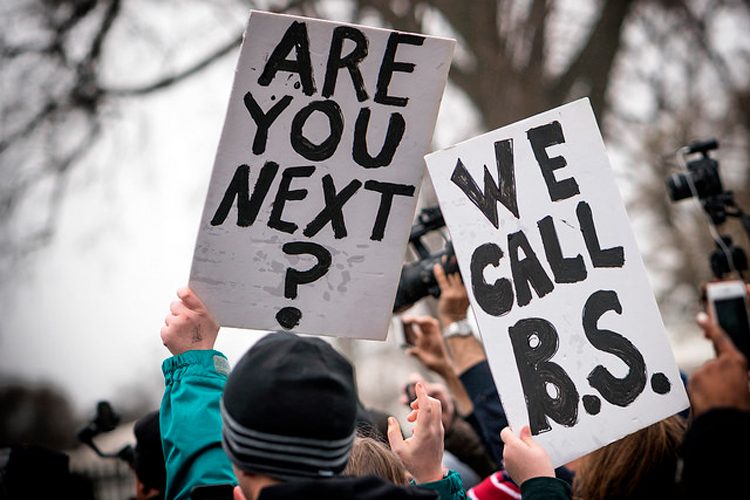As many are probably aware, on February 14, a gunman shot and killed 17 people and wounded many others with an AR-15 semi-automatic rifle at Marjory Stoneman Douglas High School in Parkland, Florida, U.S.A.
That was over a month ago. However, the event is still making headlines and buzzing on social media, and that’s unusual.
The reason it has not left the spotlight? The outspokenness of the school’s students in the aftermath. We can all learn a valuable lesson from these brave young people: If we want change to happen, we must take an active, vocal, persisting stand.
An immediate—and lasting—response
The U.S. is no stranger to mass shootings. Many have taken place across the country in recent years. These events usually make international headlines, but with so many occurring on a regular basis, the world has become somewhat numb to the news of “another” shooting in the U.S.
The Stoneman Douglas shooting was the ninth-deadliest mass shooting in modern U.S. history. It was initially widely reported on with the focus being the shocking number: 17 people dead. The media released the names of the victims quickly, as is usual.
But soon after, the discourse changed. It took a turn that previous shootings had not. The school’s students, survivors of the attack who had just witnessed the murders of their peers, started to speak out about firearm safety and legislation. They called on both state and federal lawmakers to pass legislation that would make the purchasing of assault weapons more difficult.
Three days after the shooting, student Emma Gonzalez delivered a passionate speech at a local rally, calling on President Donald Trump and members of the U.S. Congress to pass stricter gun legislation.
Emma Gonzalez delivers a speech at the Rally to Support Firearm Safety Legislation in Fort Lauderdale, Florida, U.S.A on February 17, 2018.
Her classmates were also immediately outspoken. The students called on legislators for change both in TV interviews and on social media. Some also wrote powerful op-eds.
These students formed the Never Again movement one day after the shooting, giving a title to their activism.
On February 21, one week after the shooting, they traveled to Florida’s state capital to demand action from legislators. In the following days, they had the opportunity to face U.S. Senator Marco Rubio in a CNN-hosted event. Others met with President Trump.
On the one-month anniversary of the shootings, under the guidance of Never Again, an estimated 1 million students across the country participated in the #Enough! National School Walkout to protest gun violence. A larger demonstration, March For Our Lives, will take place on March 24 in cities around the globe.
Resilience in the face of defeat
At first, the students were told “no.”
When they reached the state capital on the 21st, they learned that state legislators had rejected a motion to debate a bill that would ban assault weapons just hours before. Their meetings with President Trump and Senator Rubio turned out largely fruitless.
Some of the students were mocked due to their young ages. Some were made the subjects of conspiracy theories. Some even received death threats.
But they kept fighting, they kept speaking, and change is happening.
Florida’s senate passed the Marjory Stoneman Douglas High School Public Safety Act, which tightens gun control in the state. The U.S. Congress has been working on passing the STOP School Violence Act of 2018, which, while it does not include any gun control measures, focuses on keeping schools safe from threats.
Gun retailers like Walmart and Dick’s Sporting Goods have announced they are placing tighter restrictions on weapon and ammunition sales in their stores.
A lesson to be learned
The methods the Stoneman Douglas students used are not exclusively useful for gun reform. They can be used by groups fighting for many issues all around the world.
These days, most activism takes place on social media. We say things behind the comfort of a screen that we might be too afraid to say in public with our own mouths. The students have shown us that, while social media activism is important, it alone will not bring about real change.
The most successful movements will combine multiple forms of activism on a variety of platforms. They will attempt to get their voices heard on as many platforms as possible. They will ensure their message reaches not just those in power but the general public as well.
The activists will not let their fears of being told “no” or of being ridiculed stop them from speaking their minds. They will organize the masses and continue to fight until change occurs.
Staying silent will never work. If it is safe for us to do so, we must not be afraid to be outspoken on the issues that matter most to us—whatever they may be. The future is now, and the Stoneman Douglas students have provided us with a perfect model of activism to follow—one that is suited for 2018.

